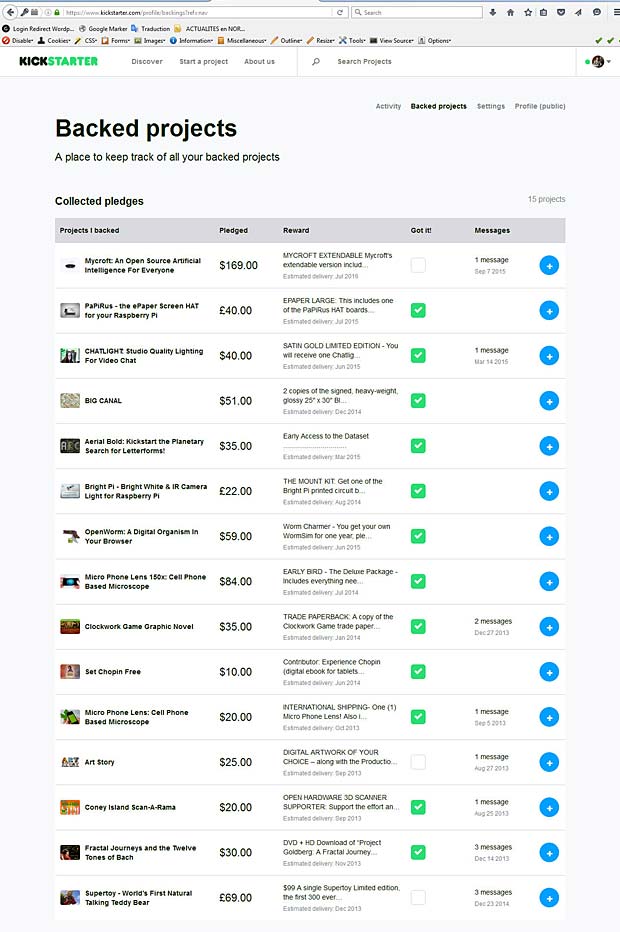Last update : October 6, 2018
Kickstarter is a new way to fund creative projects. It’s a crowdfunding platform for everything from films, games, and music to art, design, and technology. Since the launch in 2009, more than 12 million people have pledged over 2.8 Billion dollars, funding more than 118.000 creative projects. Project creators set a funding goal and a deadline. If people like a project, they can pledge money to make it happen. Funding on Kickstarter is all-or-nothing : projects must reach their funding goals to receive any money. To date, 36% of projects have reached their funding goals. Backers are supporting projects to help them come to life, not to profit financially. Instead, project creators offer rewards to thank backers for their support.
A Kickstarter app for mobiles is available at the AppStore.
I am a backer for the following projects :
- Supertoy – World’s First Natural Talking Teddy Bear (see my post about it) (nok)
- Goldberg : Fractal Journeys and the Twelve Tones of Bach (ok)
- Coney Island Scan-A-Rama : 3D Portrait Studio by the Great Fredini (ok)
- Art Story : an original animated feature film (waiting)
- Micro Phone Lens : Cell Phone Based Microscope (ok)
- Set Chopin free : free the life’s work of Frédéric Chopin (ok)
- Clockwork Game Graphic Novel (see my post about it) (ok)
- Micro Phone Lens 150x : Cell Phone Based Microscope (ok)
- OpenWorm : A Digital Organism In Your Browser (ok)
- Bright Pi : Bright White & IR Camera Light for Raspberry Pi (ok)
- Aerial Bold : Kickstart the Planetary Search for Letterforms! (ok)
- Big Canal : Gigantic, weird architectural watercolor drawing (ok)
- Chatlight : Light Up Your Video Chats & Selfies (ok)
- PaPiRus : the ePaper Screen HAT for your Raspberry Pi (ok)
- Mycroft : An Open Source Artificial Intelligence For Everyone (delayed)
- Cubetto : A playful programming language you can touch (ok)
- FlowMotion : SmartPhone Stabilizer (in shedule)

Kickstarter Account Page with backed projects
Here is a list of further projects which I consider very interesting :
- EMOTIV INSIGHT : Optimize your brain fitness & performance
- The RoboRoach : Control a living insect from your smartphone!
- Glowing Plants : Natural Lighting with no Electricity



